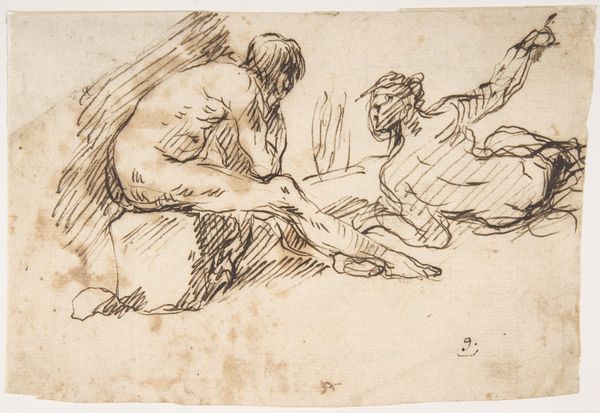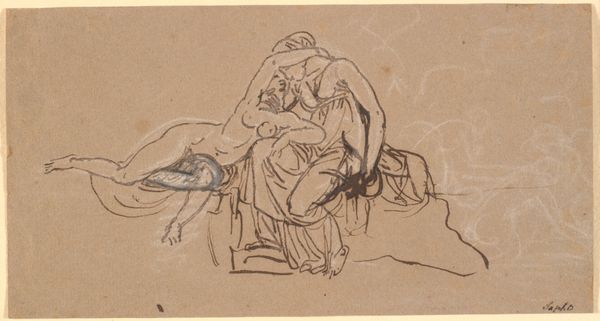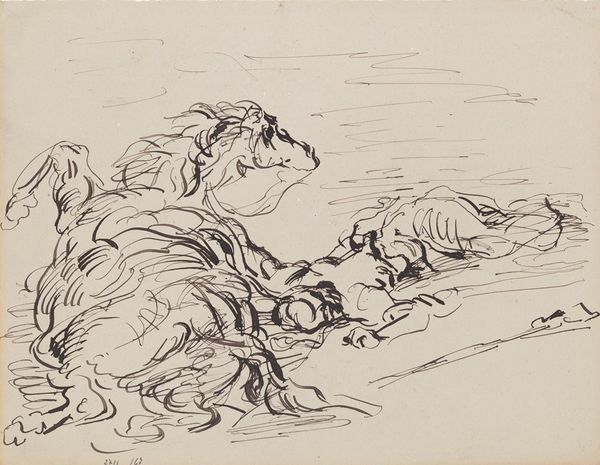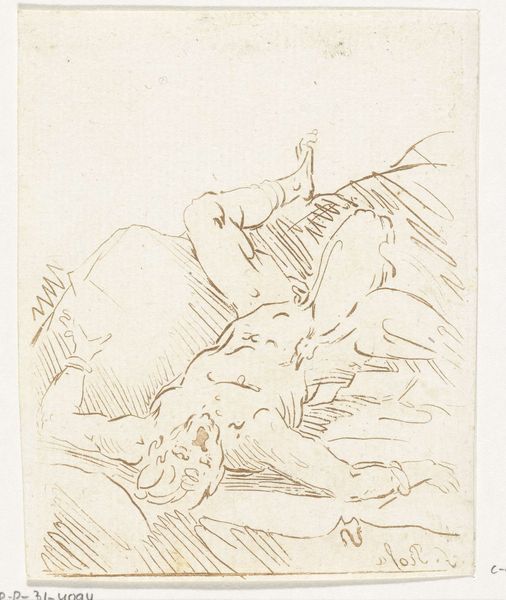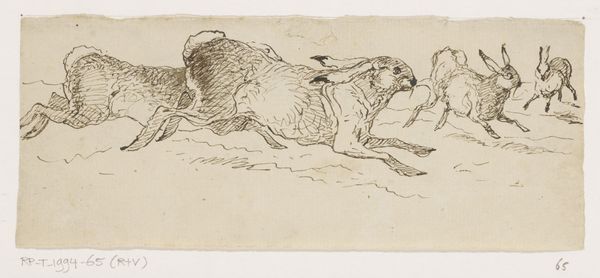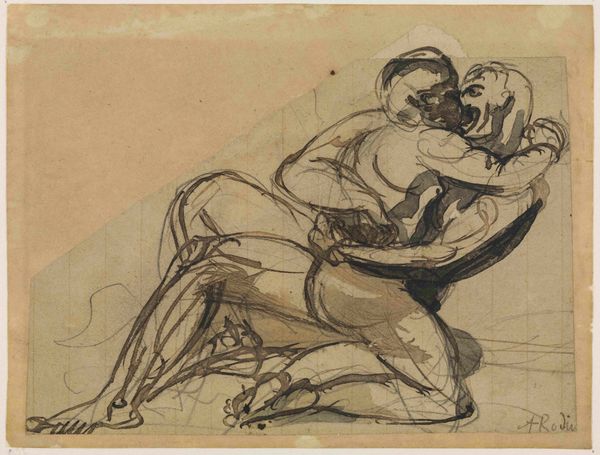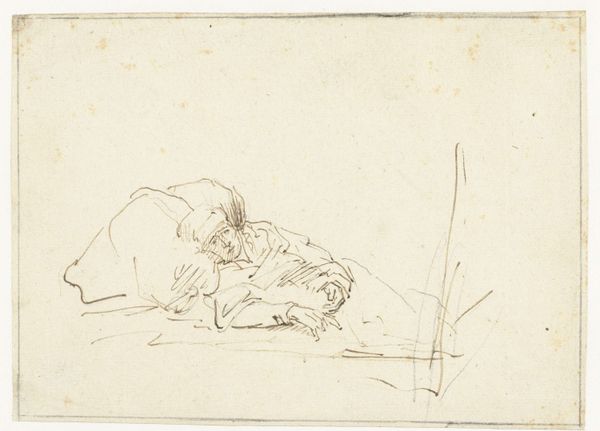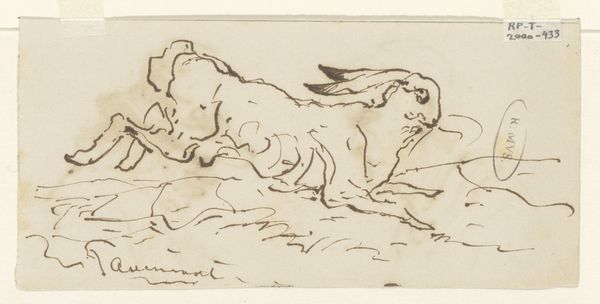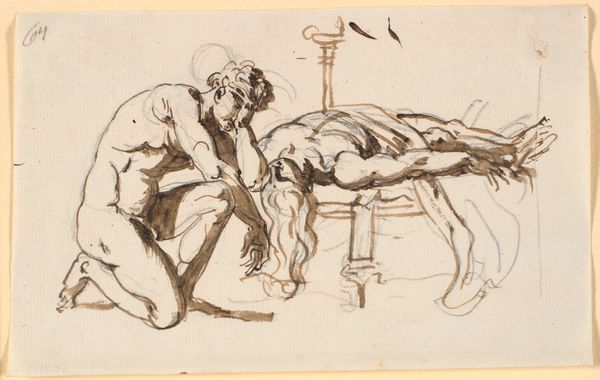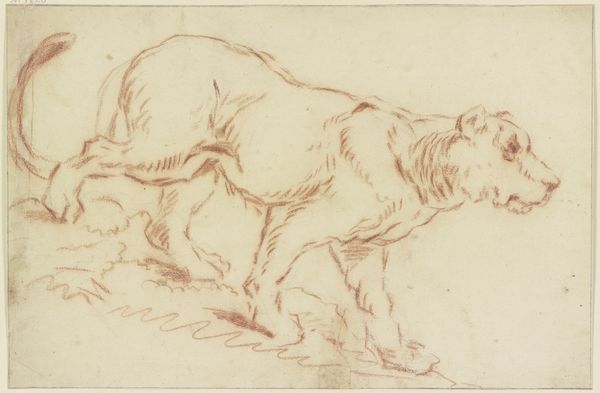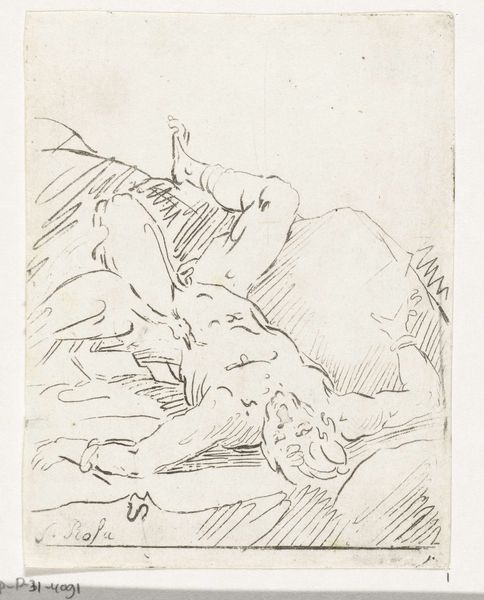
A False Scalping Performed by Iowa Tribe Members in Paris 1845
0:00
0:00
drawing, ink, pen
#
drawing
#
ink drawing
#
narrative-art
#
pen sketch
#
figuration
#
ink
#
romanticism
#
pen
#
history-painting
Dimensions: sheet: 20.16 × 31.43 cm (7 15/16 × 12 3/8 in.)
Copyright: National Gallery of Art: CC0 1.0
Curator: What strikes me most about this work is the visceral immediacy of the scene despite the simplicity of the pen and ink. It’s unsettling. Editor: I agree. Eugène Delacroix’s 1845 ink drawing, “A False Scalping Performed by Iowa Tribe Members in Paris”, plunges us directly into an act seemingly lifted from a Western dime novel, yet it happened. Curator: Precisely! This “false scalping” staged in Paris reverberates with layers of meaning. Think of the scalping as a symbolic act – the stripping away of identity. This staged performance holds within it a painful duality; the indigenous individuals were displaying cultural practices for a foreign audience while perhaps simultaneously feeling the erasure of their true identities. Editor: It's impossible to separate this drawing from the colonial gaze and the objectification of indigenous peoples. The so-called “performance” was part of a larger spectacle—these individuals were brought to Europe to be put on display, perpetuating stereotypes and fueling the romanticized yet distorted views of the “exotic other.” It’s a deeply troubling record of exploitation. Curator: Indeed, that dichotomy is so clear when you analyze the symbolism, and, for me, it comes down to the details. The feathered headdress, the precise, almost theatrical rendering of the action – they serve as powerful symbols of a staged authenticity. Editor: Absolutely. And considering Delacroix's wider body of work and known interests in Romanticism, you cannot overlook how the performance also fed a hunger for the sensational. The staging does hint at performance. It also implies an element of spectacle. The choice to render this in such stark lines makes it so much more raw. Curator: The starkness amplifies the symbolic weight. While this may be one artist's interpretation, what this symbolizes on a societal scale remains, even now, a wound in both shared and individual histories. Editor: It prompts us to confront a difficult legacy of representation and ask ourselves how these historical depictions continue to shape contemporary understanding. Curator: For me, looking at this work requires an awareness of shared historical scars, it serves as a strong reminder of the stories that art, whether deliberately or not, can perpetuate across generations. Editor: I would agree; it urges us to challenge the accepted narratives of the past, even the visual ones.
Comments
No comments
Be the first to comment and join the conversation on the ultimate creative platform.
